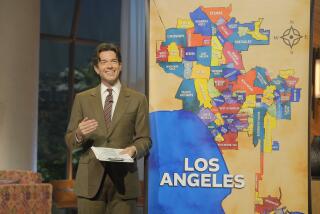FCC Chairman Urges Cable TV Competition : Media: He says laws are needed to encourage multiple-cable franchises and competition from satellite broadcasters and microwave cable systems.
Municipal officials too often slam the door on companies that could provide head-to-head competition for cable TV operators, a federal regulator said today.
Federal Communications Commission Chairman Alfred Sikes rejected the notion that, like utility monopolies, communities are best served by exclusive cable TV franchises.
Competition, he said, will drive down both costs and prices.
But he said a new FCC study of the cable TV marketplace shows that cable operators face head-to-head competition in only a handful of communities.
The result, Sikes told a news conference, is high prices and poor service.
“Head-to-head competition places an exceptionally high premium on cutting costs and putting the customer first,” Sikes said. “Competitive markets and competitive markets alone will in the final analysis forces prices toward true costs.”
Rather than reregulate cable prices, which Congress is preparing to do after lifting most local rate regulation in 1984, Sikes said, laws are needed to ease the way for multiple-cable franchises and more competition from technologies such as satellite broadcasters and microwave cable systems.
On Thursday, Sikes and his fellow commissioners voted 5-0 to forward a report to Congress urging legislation that “limits municipal authority to erect barriers or sustain entry barriers and which prohibits an unreasonable refusal to grant a second (cable) franchise.”
Most cable systems in the company are de facto monopolies. Local franchising authorities generally prefer to deal with one cable company, while cable operators say it is too risky financially to put two cables into neighborhoods.
Sikes said side-by-side cable systems could be economically feasible. He said about 87% of the nation’s TV viewers could subscribe to cable, but only about 60% do.
More to Read
The biggest entertainment stories
Get our big stories about Hollywood, film, television, music, arts, culture and more right in your inbox as soon as they publish.
You may occasionally receive promotional content from the Los Angeles Times.






